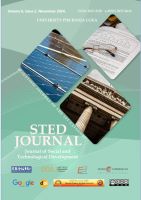ADSORPTION OF HEAVY METALS FROM WATER USING MORINGA OLIFERA PODS MODIFIED WITH IRON OXIDE NANOPARTICLES
ADSORPTION OF HEAVY METALS FROM WATER USING MORINGA OLIFERA PODS MODIFIED WITH IRON OXIDE NANOPARTICLES
Author(s): Mokete John Phele, Fanyana Mtunzi, David ShootoSubject(s): Geography, Regional studies
Published by: Univerzitet za poslovni inženjering i menadžment
Keywords: Moringa Oleifera; iron oxide nanoparticles; co-precipitation; adsorption;
Summary/Abstract: The adsorption process by metal oxide nanoparticles has been investigated an effective agent for removing organic and inorganic contaminants from water and wastewater. In this study, iron oxide nanoparticles were synthesized in the presence of moringa oliefera pods as adsorbent for lead, copper and cadmium ions adsorption. Moringa oliefera pods biochar with Fe3O4 particles precipitated on the surface of biochar was synthetized by co-precipitation method. Batch adsorption method was used, and heavy metal ions percentage recovery was measured using ICP-OES. Effect of various parameters such as contact time, pH, metal concentration and adsorbent dosage was determined on the removal efficiency. The maximum adsorption capacities of Pb2+, Cd2+, and Cu2+ by MMC were 31.46 mg·g−1, 29.05 mg·g−1 and 27.66 mg·g−1, respectively. The Langmuir and Freundlich isotherm equations were used to analyze the equilibrium isotherm data. The adsorption process fit the second-order kinetics well in all cases, and the Langmuir isotherm equation fit the experimental data well.
Journal: Časopis o društvenom i tehnološkom razvoju
- Issue Year: 6/2024
- Issue No: 2
- Page Range: 39-52
- Page Count: 14
- Language: English

